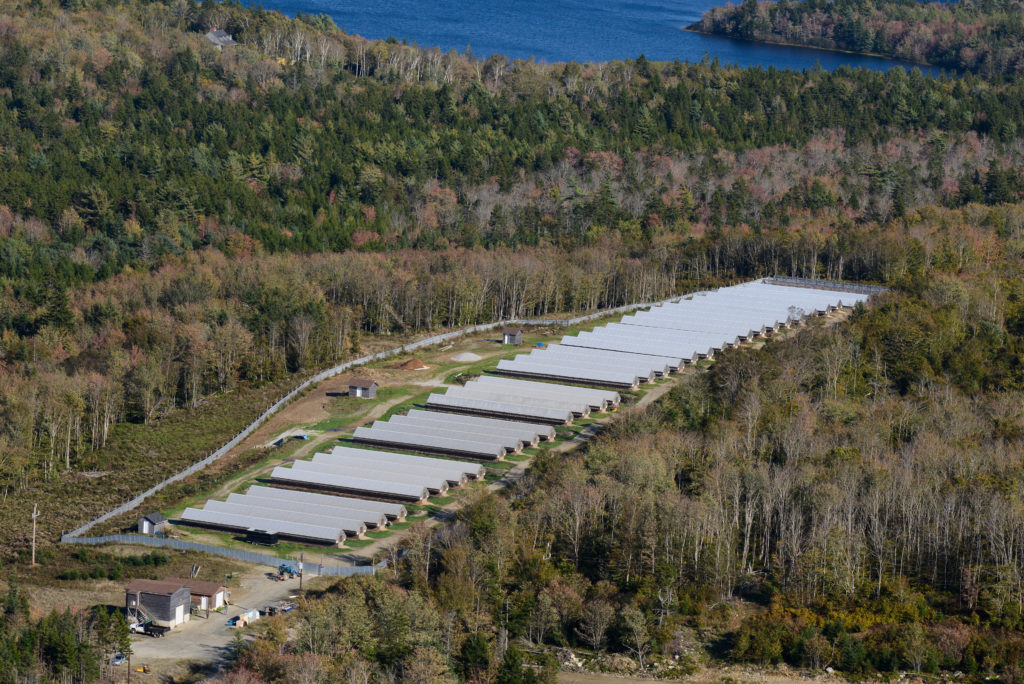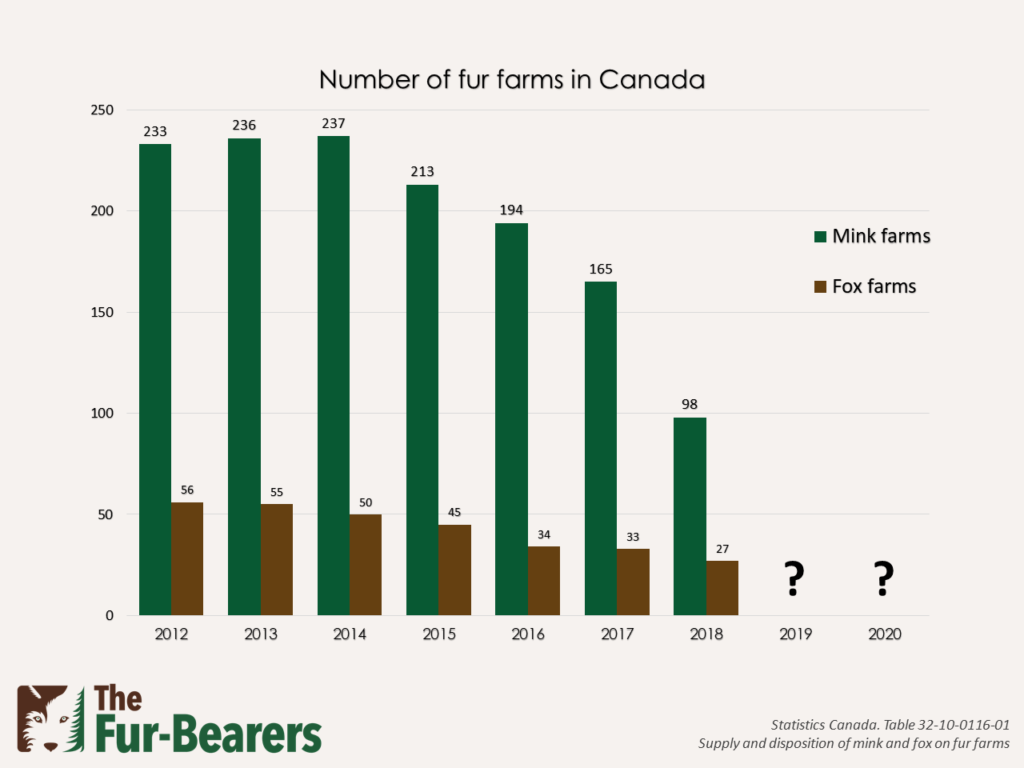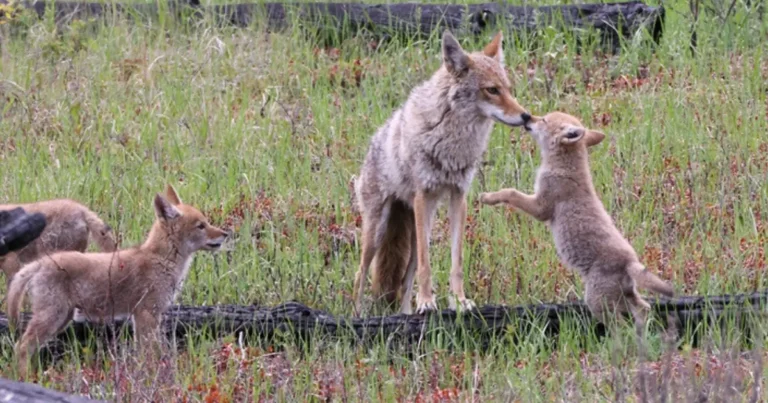
Fur farming has been in decline in Canada for several years. The number of animals killed for their fur has fallen, and the number of active farms has shrunk as well. Ten years ago, there were 233 mink farms and 56 fox farms. In 2018, this dropped to 98 mink farms and 27 fox farms. But how many active fur farms are operating in Canada today?
Statistics Canada stopped publishing the number of mink and fox farms in 2018. The Fur-Bearers contacted the agency to inquire why, and was informed that there have been recent methodological changes to their Fur Farm Survey. These changes preclude accurate estimates of the number of fur farms, particularly verifying the status of smaller farms, so Statistics Canada is no longer able to provide official statistics for the number of active fur farms.
We also reached out to Agriculture and Agri-Food Canada (AAFC) and the Canadian Food Inspection Agency (CFIA) to see if these agencies tracked this data. The CFIA did not provide any figures, writing that, “There is no federal legislation governing fur-farmed animals. Fur farming in Canada, when regulated by law, is done so provincially rather than nationally.”
AAFC directed us to their Mink Statistical Briefer (their page on market information statistics for the mink industry). It shows that the 2019 and 2020 figures were estimates, with the number of mink farms estimated for those years are 74, and 63 respectively (AAFC does not compile similar data for fox farms, or any other type fur farms like chinchillas or rabbits). AAFC acknowledged that the lack of accurate numbers of fur farms is a data gap and they have started discussions to address this. A question we posed to AAFC staff seemed to close the door on this issue:
Q: Aside from going to each province separately and inquiring how many fur farms are registered and licensed in those provinces, is there any agency or department at the federal level that would have an accurate number of how many fur farms are operating in the country?
A: No, there is no other federal department that would have an accurate number of fur farms.

Why this is a problem
Although fur farming is primarily a matter of provincial jurisdiction, the federal government has a role to play in this sector when it comes to agricultural production and trade (AAFC), disease mitigation and protecting human and animal health (CFIA), and addressing dangers to public health (Public Health Agency of Canada). In the response to a federal petition launched by The Fur-Bearers in 2021 to end fur farming in Canada, the Minister of Agriculture and Agri-Food wrote:
“The CFIA has worked with the Canadian mink industry on mitigating disease risks to farmed mink, including the development of a National Farm-Level Mink Biosecurity Standard, which all mink producers are encouraged to use. The CFIA and the Public Health Agency of Canada have worked closely with both federal and provincial partners to address risks from SARS-CoV-2.”
Without understanding the full scale of the fur farming sector, not having accurate figures of how many mink or other fur farms exist in Canada would appear to undermine strategies to address their public health risks. On its website, the Canadian Mink Breeders Association states there were over 200 mink farms across Canada in 2017. AAFC and Statistics Canada both report that there were 165 active farms in 2017. What explains this discrepancy between industry figures and official government data? Throughout the COVID-19 pandemic, did the CFIA rely on the mink industry to provide fur farm data?
The absence of data about the number fur farms in Canada is concerning. But it’s a reflection of the true nature of fur farming in the country: fur farms operate with virtually zero government oversight, both provincially and federally. Hundreds of thousands of fur-bearing animals are bred every year on fur farms that the federal government might not even know exist (or even care about due to their marginal contribution to the Canadian economy). This is all the more reason to put an end to fur farming.
Fortunately, the Canadian Census of Agriculture was conducted in 2021 and the data is expected to be released later this year. We will provide an update when it is released. This may provide the most accurate snapshot of fur farming in Canada, but with the census recurring every five years, it may also be the last glimpse into the scale of fur farming for awhile.
What you can do
A federal bill to end fur farming was introduced in Feburary 2022 by MP Nathaniel Erskine-Smith. Take action today to send a message to your MP to support this bill and end fur farming in Canada.
- Click the link below to make your voice heard: ACTION ALERT: Support Bill C-247 to End Fur Farming
- For other ways to get involved, read our post: I want to end fur farming in Canada. Where do I start?
